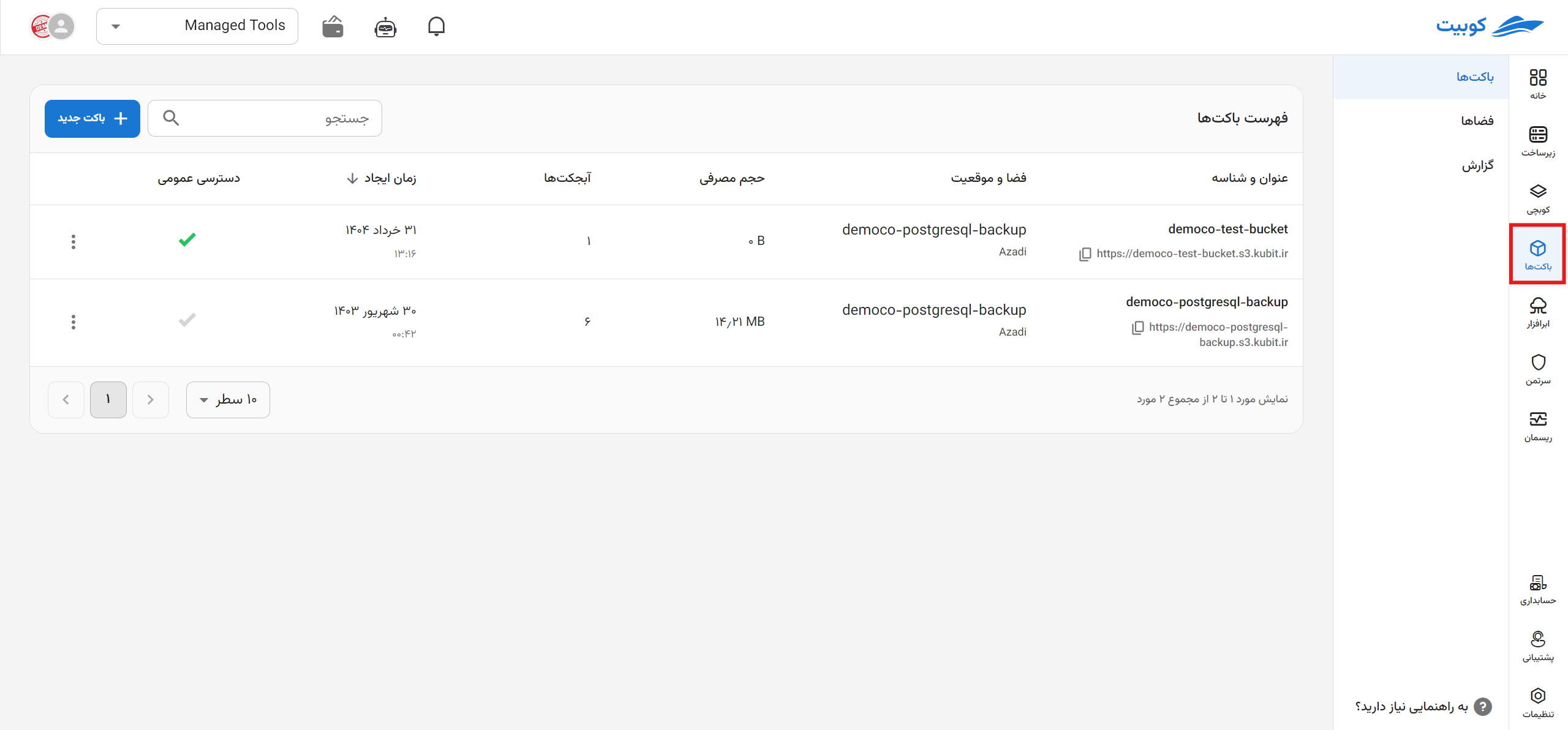Cloud Storage (Buckets)
Bucket or S3-based cloud storage is a service for storing and retrieving any type of data, including website assets, backups, data for cloud-based applications, and more. Unlike models such as File Storage (storing data in a hierarchical file structure like Windows File Explorer for organization) or Block Storage (storing data in fixed-size blocks for increased speed and efficiency), this service allows you to store data as objects, which can offer the advantages of both, plus the unique features of objects. Each object has an identifier as a unique metadata that can be used for better access and categorization of that object.
After creating your account on the Kubit website and selecting the relevant project, follow the step-by-step service guide below.

Quick Access:
| Using the Web Browser | Using the S3 Browser |
|---|---|
| A web-based panel tool provided graphically for managing your files in cloud storage | A Windows tool that allows you to easily manage and access cloud storage files. |
Any tool compatible with S3 storage is also compatible with Kubit buckets.
Explanations and Step-by-Step Guides:
*You can find how to use buckets with code (SDK) in this link. Python examples are also available in this link.
- Overview of Buckets and Spaces: Dashboard providing general information about each bucket and space
- Buckets and Spaces: Exploring concepts related to S3-based services
- Static Website: Using cloud storage as a platform for websites
- Browsers: Methods for accessing and managing files in storage
- Access Management for Buckets and Spaces: Managing user access levels through the account service
- Policy Management (Bucket Policy): Public permissions to specify object and bucket access levels when working with buckets
- Lifecycles (Life Cycles): Rules for the retention of objects in buckets
- CORS Settings: Sharing resources and objects with web browsers

